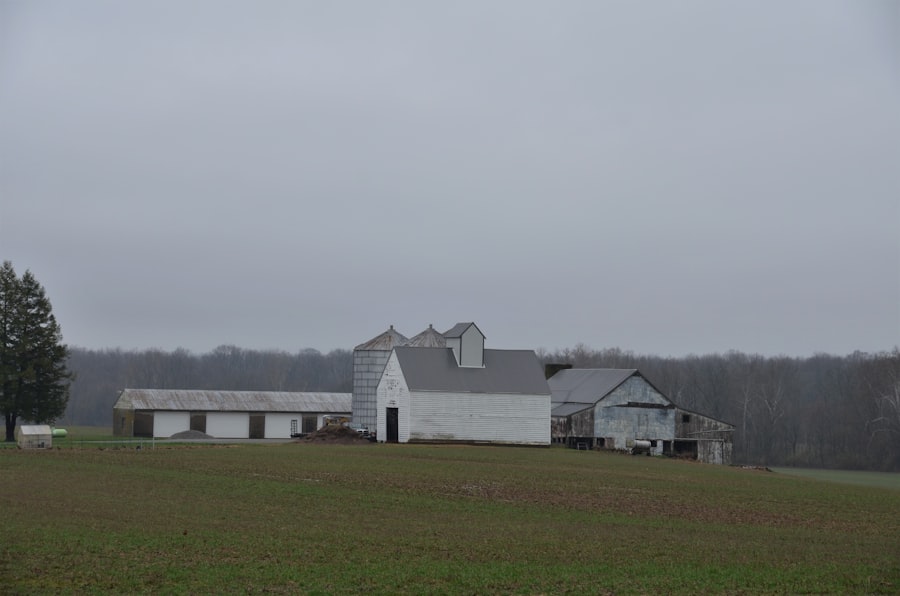Farmland Real Estate Investment Trusts (REITs) represent a unique segment of the investment landscape, focusing specifically on agricultural land. These entities acquire, manage, and lease farmland to farmers, allowing investors to gain exposure to the agricultural sector without the complexities of direct land ownership. Farmland REITs typically invest in a variety of crops, including grains, fruits, and vegetables, and may also engage in sustainable farming practices.
This investment vehicle has gained traction as a means to diversify portfolios and tap into the growing demand for food production. The appeal of Farmland REITs lies in their ability to provide a steady income stream through rental payments from farmers, as well as potential appreciation in land value over time. As global populations continue to rise and urbanization encroaches on arable land, the importance of farmland as a finite resource becomes increasingly evident.
Investors are drawn to Farmland REITs not only for their potential financial returns but also for their role in addressing food security and sustainable agriculture.
Key Takeaways
- Farmland REITs are real estate investment trusts that own and operate agricultural properties.
- Farmland REITs generate income by leasing land to farmers or by operating their own farming operations.
- Investing in Farmland REITs can provide diversification, inflation protection, and potential for long-term capital appreciation.
- Risks of investing in Farmland REITs include exposure to commodity price fluctuations, weather-related risks, and regulatory changes.
- Investors can invest in Farmland REITs through brokerage accounts, retirement accounts, or by purchasing shares directly from the REIT.
How do Farmland REITs work?
Farmland REITs operate by pooling capital from multiple investors to purchase agricultural properties. Once these properties are acquired, the REIT leases them to farmers who cultivate crops or raise livestock. The rental income generated from these leases is then distributed to investors in the form of dividends.
This structure allows individuals to invest in farmland without the need for significant capital or expertise in agriculture. The management of Farmland REITs is crucial to their success. Professional teams assess land quality, crop yield potential, and market trends to make informed investment decisions.
By leveraging economies of scale, Farmland REITs can optimize operational efficiencies and enhance returns for their investors.
Benefits of investing in Farmland REITs

Investing in Farmland REITs offers several advantages that appeal to a wide range of investors. One of the primary benefits is the potential for consistent income generation. The agricultural sector often provides stable cash flows due to long-term leases with farmers, which can be particularly attractive during economic downturns when other investments may falter.
This stability can help investors weather market volatility and provide a reliable source of income. Additionally, Farmland REITs can serve as a hedge against inflation. As food prices rise due to increased demand and limited supply, the value of farmland tends to appreciate.
This characteristic makes farmland an attractive asset class during inflationary periods, as it can preserve purchasing power over time. Furthermore, investing in Farmland REITs allows individuals to participate in the growing trend of sustainable agriculture, aligning their investments with ethical considerations and environmental stewardship.
Risks of investing in Farmland REITs
| Types of Risks | Description |
|---|---|
| Market Risk | The value of farmland REITs can fluctuate due to changes in the real estate market and agricultural industry. |
| Interest Rate Risk | Changes in interest rates can affect the financing costs for farmland REITs, impacting their profitability. |
| Regulatory Risk | Changes in government regulations related to agriculture and real estate can impact the operations and returns of farmland REITs. |
| Weather and Natural Disaster Risk | Farmland REITs are vulnerable to weather events and natural disasters that can affect crop yields and property damage. |
| Liquidity Risk | Farmland REITs may have limited liquidity, making it difficult to sell assets quickly in certain market conditions. |
Despite their many benefits, investing in Farmland REITs is not without risks. One significant concern is the volatility of agricultural markets. Factors such as weather conditions, crop diseases, and changes in commodity prices can impact farmers’ profitability and, consequently, the rental income generated by the REIT.
Investors must be aware that adverse conditions can lead to fluctuations in dividends and overall returns. Another risk associated with Farmland REITs is regulatory changes that may affect agricultural practices or land use. Policies related to environmental protection, land conservation, or trade can have profound implications for farmland values and rental agreements.
Investors should stay informed about potential legislative developments that could impact their investments in this sector.
How to invest in Farmland REITs
Investing in Farmland REITs can be accomplished through various channels, making it accessible to both seasoned investors and newcomers alike. One common method is purchasing shares of publicly traded Farmland REITs on stock exchanges. These shares can be bought and sold like any other publicly traded stock, providing liquidity and ease of access.
Investors can research different REITs to find those that align with their investment goals and risk tolerance. For those seeking a more hands-on approach, private Farmland REITs or funds may be available through financial advisors or investment firms specializing in agricultural investments. These options often require higher minimum investments but may offer unique opportunities for diversification within the farmland sector.
Regardless of the chosen method, conducting thorough due diligence is essential to ensure that the selected investment aligns with one’s financial objectives.
Factors to consider when choosing Farmland REITs

When selecting a Farmland REIT for investment, several factors warrant careful consideration. First and foremost is the management team’s experience and track record in agriculture and real estate investment. A knowledgeable management team can navigate market challenges effectively and identify lucrative opportunities within the farmland sector.
Another critical factor is the geographic focus of the REIT’s investments. Different regions may have varying agricultural strengths and vulnerabilities based on climate, soil quality, and local market conditions. Investors should assess whether the REIT’s geographic strategy aligns with their expectations for growth and risk management.
Additionally, understanding the types of crops or livestock being cultivated can provide insights into potential revenue streams and market demand.
Understanding the tax implications of Farmland REITs
Investors in Farmland REITs should also be aware of the tax implications associated with their investments. Generally, dividends received from REITs are taxed as ordinary income rather than qualified dividends, which may be subject to lower tax rates. This distinction can significantly impact an investor’s overall tax liability.
Moreover, some Farmland REITs may qualify for special tax treatment under certain conditions, such as being classified as a qualified agricultural property. Investors should consult with tax professionals to understand how their specific investments will be taxed and explore strategies for optimizing their tax situation.
Comparing Farmland REITs to other real estate investment options
When evaluating investment opportunities, it is essential to compare Farmland REITs with other real estate options such as residential or commercial properties. While traditional real estate investments often rely on rental income from tenants, Farmland REITs derive income from agricultural leases, which can offer different risk profiles and return potentials. Additionally, the performance of Farmland REITs may not correlate directly with broader real estate markets.
For instance, while urban real estate may experience fluctuations based on economic cycles, farmland values are often influenced by agricultural trends and food demand dynamics. This divergence can provide diversification benefits within an investment portfolio.
The role of Farmland REITs in a diversified investment portfolio
Incorporating Farmland REITs into a diversified investment portfolio can enhance overall risk-adjusted returns. By adding an asset class that behaves differently from traditional equities or fixed-income investments, investors can reduce portfolio volatility and improve resilience against market downturns. Farmland has historically demonstrated low correlation with other asset classes, making it an attractive option for diversification.
As global food demand continues to rise due to population growth and changing dietary preferences, farmland investments may offer unique growth opportunities that complement more conventional investments.
Current trends and outlook for Farmland REITs
The outlook for Farmland REITs appears promising as several trends shape the agricultural landscape. Increasing global population growth is driving demand for food production, placing pressure on existing farmland resources. Additionally, there is a growing emphasis on sustainable farming practices that prioritize environmental stewardship and long-term viability.
Innovations such as precision farming and biotechnology are enhancing crop yields and efficiency, which could positively impact the profitability of farmland investments. As these trends continue to evolve, they may create new opportunities for Farmland REITs to thrive in an ever-changing market environment.
Tips for successful investing in Farmland REITs
For those considering an investment in Farmland REITs, several tips can enhance the likelihood of success. First, conducting thorough research is paramount; understanding the specific REIT’s strategy, management team, and performance history will provide valuable insights into its potential for growth. Investors should also maintain a long-term perspective when investing in farmland assets.
Agricultural markets can be cyclical and influenced by various external factors; therefore, patience is essential for realizing returns over time. Finally, diversifying within the farmland sector by considering different types of crops or geographic regions can further mitigate risks while maximizing potential rewards. In conclusion, Farmland REITs present a compelling investment opportunity for those looking to diversify their portfolios while participating in the agricultural sector’s growth potential.
By understanding how these entities operate, weighing their benefits against inherent risks, and considering key factors when choosing specific investments, individuals can make informed decisions that align with their financial goals.
If you’re interested in understanding the intricacies of farmland REITs, you might find it beneficial to explore related topics that delve into the broader aspects of wealth growth and investment strategies. A particularly insightful article can be found on How Wealth Grows, which provides a comprehensive overview of various investment avenues. For more detailed information, you can visit their homepage where they cover a wide range of financial topics that complement the understanding of farmland REITs and other investment opportunities.
WATCH THIS! 🫣Why Wall Street Is Buying Up America’s Farmland (And Why It Should Terrify You)
FAQs
What is a farmland REIT?
A farmland REIT, or real estate investment trust, is a company that owns, operates, or finances income-generating agricultural real estate. It allows investors to own a stake in farmland without having to directly manage the property.
How do farmland REITs generate income?
Farmland REITs generate income through leasing the farmland to agricultural operators who pay rent to use the land for farming activities. The REIT then distributes a portion of this rental income to its investors in the form of dividends.
What are the benefits of investing in farmland REITs?
Investing in farmland REITs provides investors with the opportunity to diversify their portfolio with an asset class that has historically shown low correlation to traditional stocks and bonds. Additionally, farmland has the potential to provide a hedge against inflation and can offer long-term capital appreciation.
What are the risks associated with investing in farmland REITs?
Risks associated with investing in farmland REITs include fluctuations in agricultural commodity prices, environmental factors such as drought or natural disasters, and regulatory changes that may impact the agricultural industry. Additionally, farmland REITs are subject to interest rate risk and may be affected by changes in the overall real estate market.
How are farmland REITs taxed?
Farmland REITs are required to distribute at least 90% of their taxable income to shareholders in the form of dividends, which are then taxed at the individual investor’s ordinary income tax rate. Additionally, investors may be subject to capital gains taxes when selling their shares of the REIT.
